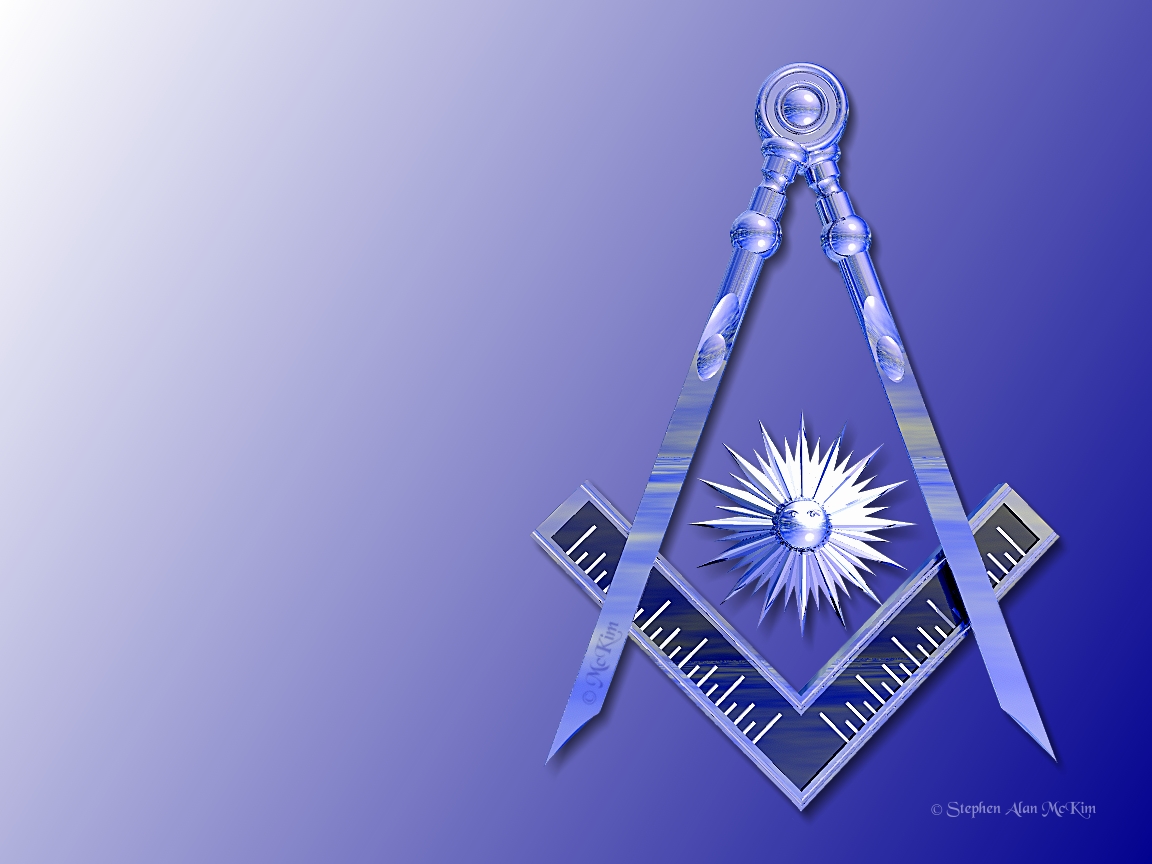Unveiling The Secrets: Freemasonry's Enduring Legacy In Iran
The intricate tapestry of Iranian history is woven with threads of diverse influences, and among the most enigmatic are those related to Freemasonry. Far from being a mere footnote, the presence of Freemasonry in Iran represents a fascinating, complex, and often misunderstood chapter in the country's social and political evolution. From its clandestine beginnings to its prominent, albeit controversial, role in the Pahlavi era, and its eventual ban following the Islamic Revolution, the story of Freemasonry in Iran is one of intellectual curiosity, political intrigue, and enduring mystery. This article delves into the historical journey of the Craft within Persia, exploring its origins, its impact on Iranian society, and the enduring legacy of a brotherhood now operating largely in exile.
The narrative of Freemasonry in Iran is not merely a tale of secret societies; it is a lens through which to examine the broader currents of modernization, Western influence, and national identity that shaped Iran over centuries. Its symbols and the influence of its prominent members have left a subtle yet lasting mark on Iranian culture and society, prompting intellectual historians to ponder how such ideas permeated a nation without a robust print industry in its early days. This exploration seeks to demystify, to the extent possible, the journey of Freemasonry in Iran, drawing upon available historical accounts and shedding light on its unique trajectory.
Table of Contents
- The Enigmatic Roots: Freemasonry's Dawn in Persia
- The Pahlavi Era: A Complex Evolution
- International Connections: A Global Fraternity
- The Islamic Revolution and the Ban: A Turning Point
- Freemasonry in Exile: Preserving the Craft
- Perceptions and Realities: Deconstructing the Myths
- Notable Figures and Subtle Marks
- The Current Landscape: A Banned Brotherhood
- Conclusion: An Enduring Mystery
The Enigmatic Roots: Freemasonry's Dawn in Persia
The story of Freemasonry in Iran is a fascinating chapter, with roots extending back to the 19th century. Unlike many European nations where the Craft developed organically from medieval guilds, its introduction to Persia was primarily an external phenomenon. Persians made their first acquaintance with Freemasonry outside Persia, notably in India, but more importantly, in Europe. This early exposure was crucial, as it predated the establishment of formal lodges within Iran itself.
The question of how these new, Western ideas came to influence Iran, especially given the absence of a robust print industry in the country during those early periods, has long intrigued intellectual historians. One significant route for this cultural transmission was through the diplomatic missions of Iranian officials and elites to European capitals. As early as the Fath Ali Shah era (reigned 1797-1834), the first Iranian Freemasons, as noted by Hamid Algar, were initiated during their diplomatic postings in Europe. These individuals, exposed to Enlightenment ideals and the structured camaraderie of Masonic lodges abroad, brought back not just new ideas but also a nascent understanding of the fraternity.
Early Encounters and European Influence
While initial contacts were made abroad, it was not until the first decade of the 20th century that a lodge regularly affiliated with one of the recognized European obediences actually appeared in Iran. This marked a significant shift from individual membership to the establishment of organized Masonic bodies within the country. The presence of European powers in the region, particularly the British with the discovery of oil in Persia, further facilitated this process. Many British workers and traders who arrived in Iran were Masons, and their presence naturally led to the formation of lodges to continue their masonic activities.
Scotland, in particular, was very active in issuing warrants for new lodges in Iran. An early example is Lodge Light in Iran #1191, established at Shiraz in 1919, which later relocated to Tehran. These early lodges often served as social hubs for expatriates, but they also began to attract Iranian intellectuals and elites interested in the principles of brotherhood, enlightenment, and self-improvement that Freemasonry espoused. The increasing settlement in the Muslim world of colonists who were Freemasons eased the principle of tolerance and, perhaps, reduced masonic discrimination, paving the way for countries like Iran, Iraq, Turkey, Egypt, and Morocco to integrate Freemasonry into their social fabric to varying degrees.
The Pahlavi Era: A Complex Evolution
Freemasonry in Iran experienced its most significant period of growth and transformation during the Pahlavi era (1925-1979). This period saw the Craft undergo three distinct phases, reflecting the changing political and social landscape of the country. Initially, it remained a relatively small, exclusive circle, but as Iran embarked on its modernization drive, the fraternity gained more prominence.
Shifting Tides: From Revival to Prominence
One of the notable developments during the Pahlavi era was the revival of Freemasonry and the creation of new lodges, such as Lodge Pahlavi (also known as Homāyūn). This lodge, and others that followed, became significant centers for political and intellectual discourse, attracting many influential figures from various sectors of Iranian society. The presence of high-ranking officials, intellectuals, and professionals within Masonic lodges meant that the fraternity wielded a subtle yet undeniable influence on Iranian politics and culture. Some historical accounts suggest that figures like Bāqer Hayʾat, who served as Deputy Grand Master, played a crucial role in shaping the direction of Freemasonry in Iran during this period.
The growth of Freemasonry during the Pahlavi era was also linked to its international connections. Lodges in Iran were affiliated with different Masonic Grand Lodges from various countries, including England, France, Germany, the USA, and Switzerland. This global network not only provided a framework for legitimacy and recognition but also facilitated the exchange of ideas and practices. The structure of these lodges, with officers like the orator (skilled in expressing Masonic tenets), treasurer (keeper of the masonic purse), secretary (in charge of correspondence), and inner guard (master of ceremonies), mirrored the global Masonic tradition, fostering a sense of universal brotherhood among its members.
International Connections: A Global Fraternity
The international dimension of Freemasonry was a defining characteristic of its presence in Iran. The ability of Iranian lodges to link with grand lodges in diverse countries like England, France, Germany, the USA, and Switzerland underscored the global reach of the fraternity. This network was not merely administrative; it facilitated cultural exchange, intellectual discourse, and, for some, a sense of belonging to a universal brotherhood that transcended national boundaries.
The discovery of oil in Persia in the early 20th century further cemented these international ties. The influx of British workers and traders, a significant percentage of whom were Masons, naturally led to the establishment of lodges under the patronage of their home Grand Lodges. As mentioned, Scotland was particularly active, issuing warrants for lodges like Lodge Light in Iran #1191 in Shiraz, which later moved to Tehran. These lodges often served as a bridge between the expatriate community and Iranian elites, fostering relationships that might not have developed otherwise. The principles of tolerance, a cornerstone of Freemasonry, were often cited as a reason for its appeal in diverse cultural contexts, enabling its integration into several Muslim countries.
The Islamic Revolution and the Ban: A Turning Point
The Islamic Revolution of 1979 marked a dramatic and definitive turning point for Freemasonry in Iran. With the establishment of the Islamic Republic, many institutions associated with the previous regime or perceived as symbols of Western influence came under scrutiny. Freemasonry, with its secretive nature and historical ties to Western powers, quickly became a target. Since the revolution, Freemasonry has been banned in Iran.
This ban was not merely a legal prohibition; it was accompanied by a severe crackdown on Masonic lodges and their members. For many Freemasons in Iran, the revolution represented a profound loss and a personal catastrophe. Indeed, some Masonic historians consider the fate of the Craft in Iran to be the greatest Masonic catastrophe since the Second World War, given the complete dissolution of established lodges and the dispersal of its members. The assets of the lodges were confiscated, and many prominent Masons faced persecution, imprisonment, or were forced into exile. The vibrant Masonic life that had flourished for decades in Iran abruptly ceased to exist.
Freemasonry in Exile: Preserving the Craft
Despite the ban and the severe repression in Iran, the spirit of Iranian Freemasonry did not entirely die. For those Masons who fled the country or were already living abroad, the need to preserve their traditions and brotherhood was paramount. This led to the creation of a "Grand Lodge of Iran in Exile," a testament to the resilience and commitment of its members. This exiled Grand Lodge was established to provide a home for those Masons who could no longer practice their Craft openly in their homeland.
A New Home Across Continents
The establishment of the Grand Lodge of Iran in Exile was a significant undertaking. Its formal recognition by established Masonic bodies was crucial for its legitimacy and continued operation. In March 1985, a pivotal moment occurred when the Grand Lodge of Massachusetts voted to allow the exiled Grand Lodge to hold Masonic activities within their jurisdiction. This approval, granted in the city of Boston, provided a crucial base for the exiled Iranian Masons. The local Grand Lodge's approval in 1985 solidified the presence of a "Grand Lodge of Iran in Exile" in Los Angeles, which had become a significant hub for the Iranian diaspora.
Today, the Grand Lodge of Iran (in exile) continues to operate, serving as the governing body for Persian lodges outside Iran. There are now Persian lodges in various locations, including Washington D.C., France, and California, all operating under the umbrella of the Grand Lodge of Iran (in exile). This network ensures that Iranian Freemasons, dispersed across the globe, can continue to meet, practice their rituals, and maintain their fraternal bonds, keeping the flame of Iranian Freemasonry alive despite its suppression in its country of origin. The current contact information for the Grand Lodge of Iran (in exile) is readily available to those seeking to connect with this unique branch of the fraternity.
Perceptions and Realities: Deconstructing the Myths
The perception of Freemasonry in Iran, both historically and post-revolution, has been complex and often shrouded in myth and suspicion. For many, the secrecy inherent in Masonic practices fueled conspiracy theories, particularly in a political climate prone to attributing national misfortunes to external, hidden forces. However, a more nuanced view suggests a different reality.
As Raeen, a notable scholar on the subject, points out, "there are some honest, dignified and patriotic people among Iranian Freemasons but there are also others who are evil and greedy and think of nothing other than gathering wealth in corrupt ways and serving the agenda of their alien masters." This perspective highlights the internal diversity within the fraternity and cautions against monolithic interpretations. It suggests that while some individuals might have used their Masonic connections for personal gain or to serve foreign interests, many others were genuinely committed to the Craft's ideals of self-improvement, philanthropy, and intellectual discourse. The belief held by some that taking the oath of loyalty was in accord with Masonic traditions, as represented by the Adamiyat Society, further complicates the narrative, indicating a desire to reconcile Masonic principles with national identity.
Notable Figures and Subtle Marks
Throughout its history in Iran, Freemasonry attracted a significant number of prominent individuals. These included intellectuals, politicians, military officers, and professionals who were drawn to the fraternity's emphasis on reason, morality, and social progress. While the full list of influential Iranian Freemasons remains a subject of historical research and debate, their collective presence undoubtedly left a lasting, albeit subtle, mark on Iranian culture and society.
The Legacy of Influence
The influence of Freemasonry was not always overt. It manifested through the symbols that subtly permeated architectural designs, literary works, and even public discourse. More significantly, it was seen in the ideas championed by its members – ideas related to constitutionalism, legal reform, education, and modernization. Many Freemasons were at the forefront of movements advocating for greater civil liberties and a more enlightened approach to governance. While it is challenging to quantify this influence precisely, the presence of these individuals in key positions meant that Masonic ideals, even if not explicitly acknowledged, contributed to the intellectual ferment of the late Qajar and Pahlavi eras. Their contributions, whether in public service or cultural development, reflected the values they espoused within the Craft.
The Current Landscape: A Banned Brotherhood
Today, the landscape for Freemasonry in Iran is starkly different from its heyday. As previously stated, there are no official Masonic lodges in Iran due to the Islamic government's ban. This reality is deeply felt by those who, like a "fellow Masonic enthusiast from Iran" sharing their experience on a throwaway account for obvious reasons, express a longing to join the fraternity but are unable to do so openly within their own country. This personal account underscores the profound impact of the ban on individuals who feel a genuine connection to the principles of Freemasonry.
The absence of official lodges means that any Masonic activity within Iran would be clandestine and fraught with significant risks. This situation represents a continuation of the "greatest Masonic catastrophe" since World War II, as the once-thriving Craft in Iran has been forced underground or into exile. While the Grand Lodge of Iran (in exile) continues to thrive abroad, providing a spiritual and fraternal home for Iranian Masons worldwide, the possibility of a revival of overt Freemasonry within Iran remains distant under the current political climate. The legacy, however, persists in the historical records, the memories of its former members, and the continued existence of its exiled branches, reminding us of a unique chapter in Iran's engagement with global intellectual and social movements.
Conclusion: An Enduring Mystery
The journey of Freemasonry in Iran is a compelling narrative of adaptation, influence, and ultimate suppression. From its initial introduction through diplomatic missions in Europe to its significant, albeit sometimes controversial, role during the Pahlavi era, and its eventual ban following the Islamic Revolution, the Craft has left an indelible mark on the country's history. While no official lodges exist in Iran today, the "Grand Lodge of Iran in Exile" stands as a testament to the enduring spirit of its members, preserving the traditions and brotherhood across continents.
Understanding Freemasonry in Iran requires moving beyond simplistic interpretations and appreciating the nuances of its historical context, the diverse motivations of its members, and its complex relationship with both local and international forces. It serves as a powerful reminder of how global ideas can take root in unique cultural landscapes and how political upheavals can dramatically alter the course of social institutions. We encourage you to delve deeper into the rich history of Iran and explore other fascinating aspects of its cultural and social evolution. What are your thoughts on the subtle influences of such historical movements? Share your perspectives in the comments below, or explore other articles on our site that uncover hidden facets of world history.

Freemason

Freemason Wallpaper HD - WallpaperSafari

Freemason in Lodge | Stable Diffusion Online